
By Magnolia Miller
Well, it might not feel like it when you’re in the middle of perimenopause, but the answer is yes. Yes, there is life after menopause – and it’s not so bad.
A reader shared with me recently the grief and emotional struggles she is experiencing as she comes to terms with the fact that she is no longer (at least in her mind) an attractive, desirable woman, since she began to go through perimenopause.
Having walked that road, I know exactly how she feels, and the kinds of questions she is likely asking herself about this profound, mid-life transition called menopause. I mean, let’s face it. You’ve spent 40-something years defining and cultivating a life and personal identity, only to have it obliterated all to hell and back by hot flashes, mood swings, and night sweats.
And that’s just the short list.
But life transitions aren’t easy for anybody. I have a 22 year old son who often laments the loss of his carefree childhood as he is now dealing with grown-up realities like expensive car repairs, health insurance costs, college loan debt, and just the day-to-day, non-sexy, no-fun decisions, grown-ups have to make every day of their life.
I don’t have the heart to tell him that just when he gets this part of his life figured out, it changes all over again.
I think what makes the menopause transition so difficult for women is that we are beginning to face the reality of our own mortality. Sure, we talk about our sagging breasts, our lagging libido, and feeling so oldwhen we start going through perimenopause and menopause. But, what we really mean, is that we realize we are closer to death and dying than we’ve ever been before – and it’s scary. It’s sobering. It’s existential.
But, there’s a funny thing about facing death and dying. It makes you realize how much you should live.
Perhaps that is why many women become so fierce once they reach menopause. They realize without equivocation that the number of years they have left on this earth are ticking down fast, and if they don’t get on with living them they are gone.
The thing I personally love about menopause is that it forces your hand. There’s no place to run, no place to hide. You’re past middle-age and you’re facing down death whether you like it or not. It’s crunch time. Yes, it’s uncomfortable and difficult. Sometimes it’s damn well excruciating. But it’s a crossroad of life, and you get to choose the road you’re going to walk.
I don’t know about you, but I find that rather empowering. I can’t control the fact that I’m dying. But I can control how I live. I don’t have to “go gentle into that good night” so I won’t. I don’t know that I want to“rage, rage, against the dying of the light” either. I had enough of raging and mood swings during perimenopause, thank you very much.
I would much rather just “live like I am dying.” Because we all are, menopause sisters. We all are.
Magnolia Miller is a certified healthcare consumer advocate in women’s health and a women’s freelance health writer and blogger at The Perimenopause Blog.
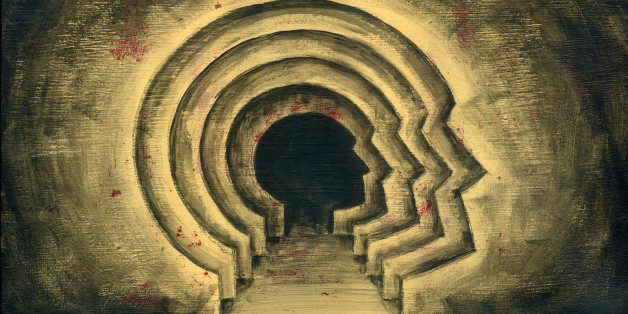
Why do we do the things we do? Despite our best attempts to “know thyself,” the truth is that we often know astonishingly little about our own minds, and even less about the way others think. As Charles Dickens once put it, “A wonderful fact to reflect upon, that every human creature is constituted to be that profound secret and mystery to every other.”
Psychologists have long sought insights into how we perceive the world and what motivates our behavior, and they’ve made enormous strides in lifting that veil of mystery. Aside from providing fodder for stimulating cocktail-party conversations, some of the most famous psychological experiments of the past century reveal universal and often surprising truths about human nature. Here are 10 classic psychological studies that may change the way you understand yourself.
We all have some capacity for evil.
Arguably the most famous experiment in the history of psychology, the 1971 Stanford prison study put a microscope on how social situations can affect human behavior. The researchers, led by psychologist Philip Zimbardo, set up a mock prison in the basement of the Stanford psych building and selected 24 undergraduates (who had no criminal record and were deemed psychologically healthy) to act as prisoners and guards. Researchers then observed the prisoners (who had to stay in the cells 24 hours a day) and guards (who shared eight-hour shifts) using hidden cameras.
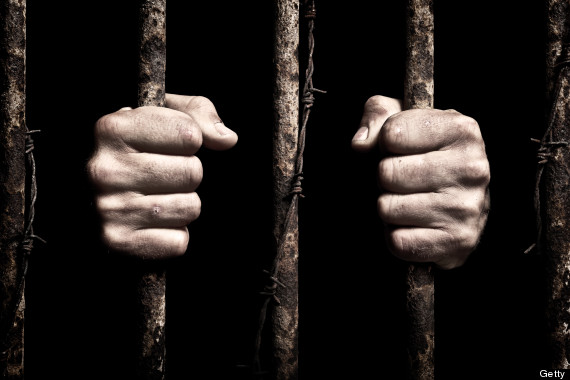
The experiment, which was scheduled to last for two weeks, had to be cut short after just six days due to the guards’ abusive behavior — in some cases they even inflicted psychological torture — and the extreme emotional stress and anxiety exhibited by the prisoners.
“The guards escalated their aggression against the prisoners, stripping them naked, putting bags over their heads, and then finally had them engage in increasingly humiliating sexual activities,” Zimbardo told American Scientist. “After six days I had to end it because it was out of control — I couldn’t really go to sleep at night without worrying what the guards could do to the prisoners.”
We don’t notice what’s right in front of us.
Think you know what’s going on around you? You might not be nearly as aware as you think. In 1998, researchers from Harvard and Kent State University targeted pedestrians on a college campus to determine how much people notice about their immediate environments. In the experiment, an actor came up to a pedestrian and asked for directions. While the pedestrian was giving the directions, two men carrying a large wooden door walked between the actor and the pedestrian, completely blocking their view of each other for several seconds. During that time, the actor was replaced by another actor, one of a different height and build, and with a different outfit, haircut and voice. A full half of the participants didn’t notice the substitution.
The experiment was one of the first to illustrate the phenomenon of “change blindness,” which shows just how selective we are about what we take in from any given visual scene — and it seems that we rely on memory and pattern-recognition significantly more than we might think.
Delaying gratification is hard — but we’re more successful when we do.
A famous Stanford experiment from the late 1960s tested preschool children’s ability to resist the lure of instant gratification — and it yielded some powerful insights about willpower and self-discipline. In the experiment, four-year-olds were put in a room by themselves with a marshmallow on a plate in front of them, and told that they could either eat the treat now, or if they waited until the researcher returned 15 minutes later, they could have two marshmallows.
While most of the children said they’d wait, they often struggled to resist and then gave in, eating the treat before the researcher returned, TIME reports. The children who did manage to hold off for the full 15 minutes generally used avoidance tactics, like turning away or covering their eyes. The implications of the children’s behavior were significant: Those who were able to delay gratification were much less likely to be obese, or to have drug addiction or behavioral problems by the time they were teenagers, and were more successful later in life.
We can experience deeply conflicting moral impulses.
A famous 1961 study by Yale psychologist Stanley Milgram tested (rather alarmingly) how far people would go to obey authority figures when asked to harm others, and the intense internal conflict between personal morals and the obligation to obey authority figures.
Milgram wanted to conduct the experiment to provide insight into how Nazi war criminals could have perpetuated unspeakable acts during the Holocaust. To do so, he tested a pair of participants, one deemed the “teacher” and the other deemed the “learner.” The teacher was instructed to administer electric shocks to the learner (who was supposedly sitting in another room, but in reality was not being shocked) each time they got questions wrong. Milgram instead played recordings which made it sound like the learner was in pain, and if the “teacher” subject expressed a desire to stop, the experimenter prodded him to go on. During the first experiment, 65 percent of participants administered a painful, final 450-volt shock (labeled “XXX”), although many were visibly stressed and uncomfortable about doing so.
While the study has commonly been seen as a warning of blind obedience to authority, Scientific American recently revisited it, arguing that the results were more suggestive of deep moral conflict.
“Human moral nature includes a propensity to be empathetic, kind and good to our fellow kin and group members, plus an inclination to be xenophobic, cruel and evil to tribal others,” journalist Michael Shermer wrote. “The shock experiments reveal not blind obedience but conflicting moral tendencies that lie deep within.”
Recently, some commenters have called Milgram’s methodology into question, and one critic noted that records of the experiment performed at Yale suggested that 60 percent of participants actually disobeyed orders to administer the highest-dosage shock.
We’re easily corrupted by power.
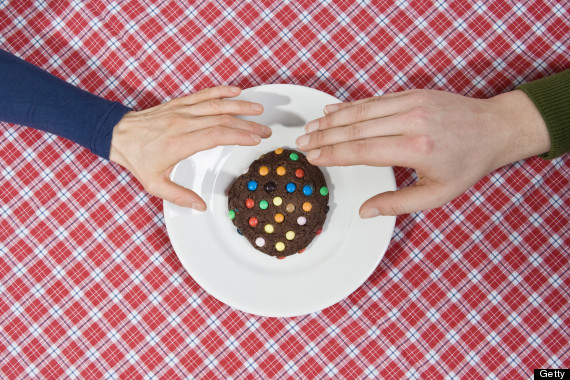
There’s a psychological reason behind the fact that those in power sometimes act towards others with a sense of entitlement and disrespect. A 2003 study published in the journal Psychological Review put students into groups of three to write a short paper together. Two students were instructed to write the paper, while the other was told to evaluate the paper and determine how much each student would be paid. In the middle of their work, a researcher brought in a plate of five cookies. Although generally the last cookie was never eaten, the “boss” almost always ate the fourth cookie — and ate it sloppily, mouth open.
“When researchers give people power in scientific experiments, they are more likely to physically touch others in potentially inappropriate ways, to flirt in more direct fashion, to make risky choices and gambles, to make first offers in negotiations, to speak their mind, and to eat cookies like the Cookie Monster, with crumbs all over their chins and chests,” psychologist Dacher Keltner, one of the study’s leaders, wrote in an article for UC Berkeley’s Greater Good Science Center.
We seek out loyalty to social groups and are easily drawn to intergroup conflict.
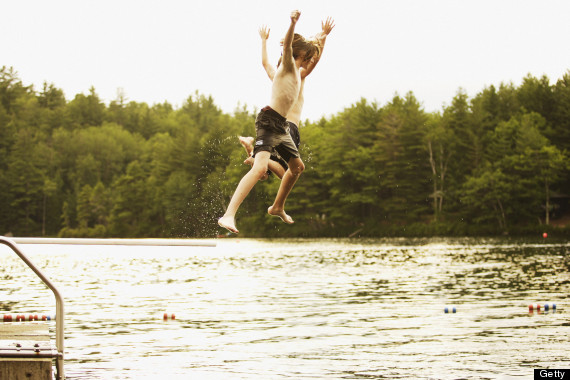
This classic 1950s social psychology experiment shined a light on the possible psychological basis of why social groups and countries find themselves embroiled in conflict with one another — and how they can learn to cooperate again.
Study leader Muzafer Sherif took two groups of 11 boys (all age 11) to Robbers Cave State Park in Oklahoma for “summer camp.” The groups (named the “Eagles” and the “Rattlers”) spent a week apart, having fun together and bonding, with no knowledge of the existence of the other group. When the two groups finally integrated, the boys started calling each other names, and when they started competing in various games, more conflict ensued and eventually the groups refused to eat together. In the next phase of the research, Sherif designed experiments to try to reconcile the boys by having them enjoy leisure activities together (which was unsuccessful) and then having them solve a problem together, which finally began to ease the conflict.
We only need one thing to be happy.
The 75-year Harvard Grant study —one of the most comprehensive longitudinal studies ever conducted — followed 268 male Harvard undergraduates from the classes of 1938-1940 (now well into their 90s) for 75 years, regularly collecting data on various aspects of their lives. The universal conclusion? Love really is all that matters, at least when it comes to determining long-term happiness and life satisfaction.
The study’s longtime director, psychiatrist George Vaillant, told The Huffington Postthat there are two pillars of happiness: “One is love. The other is finding a way of coping with life that does not push love away.” For example, one participant began the study with the lowest rating for future stability of all the subjects and he had previously attempted suicide. But at the end of his life, he was one of the happiest. Why? As Vaillant explains, “He spent his life searching for love.”
We thrive when we have strong self-esteem and social status.

Achieving fame and success isn’t just an ego boost — it could also be a key to longevity, according to the notorious Oscar winners study. Researchers from Toronto’s Sunnybrook and Women’s College Health Sciences Centre found that Academy Award-winning actors and directors tend to live longer than those who were nominated but lost, with winning actors and actresses outliving their losing peers by nearly four years.
“We are not saying that you will live longer if you win an Academy Award,” Donald Redelmeier, the lead author of the study, told ABC News. “Or that people should go out and take acting courses. Our main conclusion is simply that social factors are important … It suggests that an internal sense of self-esteem is an important aspect to health and health care.”
We constantly try to justify our experiences so that they make sense to us.
Anyone who’s taken a freshman Psych 101 class is familiar with cognitive dissonance, a theory which dictates that human beings have a natural propensity to avoid psychological conflict based on disharmonious or mutually exclusive beliefs. In an often-cited 1959 experiment, psychologist Leon Festinger asked participants to perform a series of dull tasks, like turning pegs in a wooden knob, for an hour. They were then paid either $1 or $20 to tell a “waiting participant” (aka a researcher) that the task was very interesting. Those who were paid $1 to lie rated the tasks as more enjoyable than those who were paid $20. Their conclusion? Those who were paid more felt that they had sufficient justification for having performed the rote task for an hour, but those who were only paid $1 felt the need to justify the time spent (and reduce the level of dissonance between their beliefs and their behavior) by saying that the activity was fun. In other words, we commonly tell ourselves lies to make the world appear a more logical, harmonious place.
We buy into stereotypes in a big way.
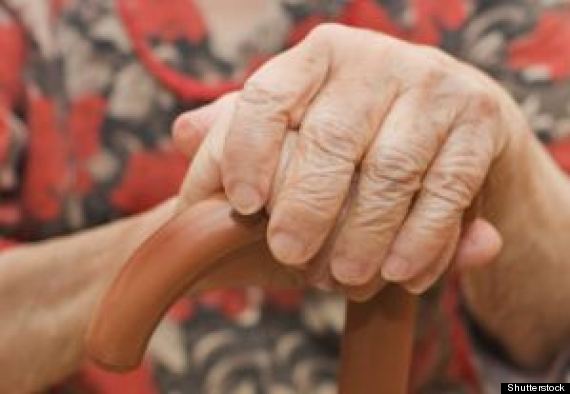
Stereotyping various groups of people based on social group, ethnicity or class is something nearly all of us do, even if we make an effort not to — and it can lead us to draw unfair and potentially damaging conclusions about entire populations. NYU psychologist John Bargh’s experiments on “automaticity of social behavior”revealed that we often judge people based on unconscious stereotypes — and we can’t help but act on them. We also tend to buy into stereotypes for social groups that we see ourselves being a part of. In one study, Bargh found that a group of participants who were asked to unscramble words related to old age — “Florida,” “helpless” and “wrinkled” — walked significantly slower down the hallway after the experiment than the group who unscrambled words unrelated to age. Bargh repeated the findings in two other comparable studies that enforced stereotypes based on race and politeness.
“Stereotypes are categories that have gone too far,” Bargh told Psychology Today. “When we use stereotypes, we take in the gender, the age, the color of the skin of the person before us, and our minds respond with messages that say hostile, stupid, slow, weak. Those qualities aren’t out there in the environment. They don’t reflect reality.”
Source: http://www.huffingtonpost.com/2013/10/18/20-psychological-studies-_n_4098779.html
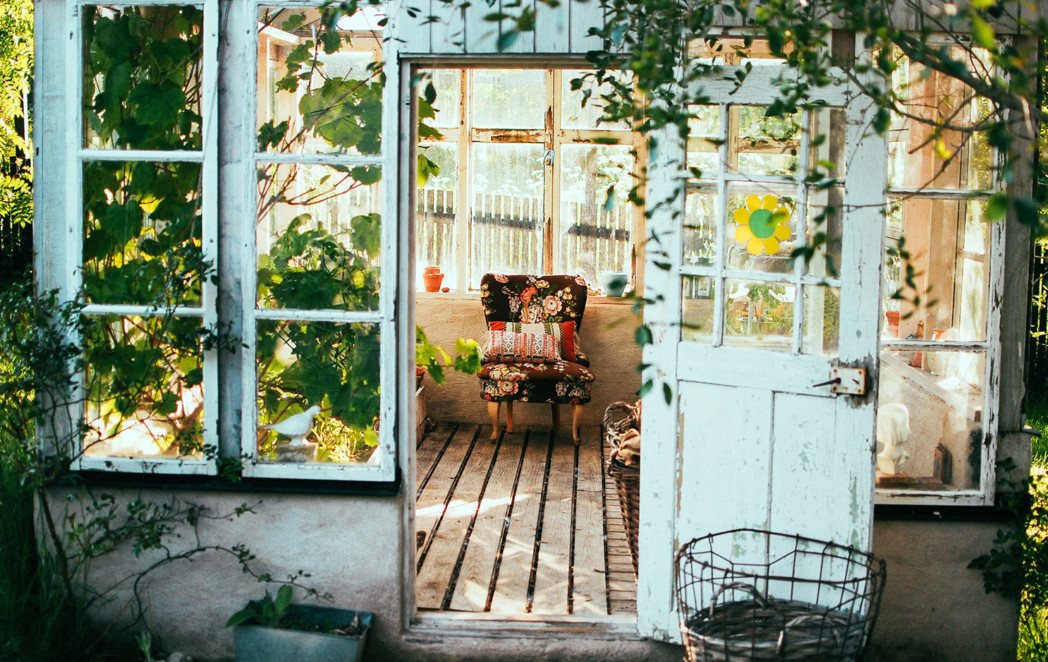
“Your sacred space is where you can find yourself over and over again. ~ Joseph Campbell
There’s a lot of talk online and in the spiritual community about “sacred space”. But if you’re new to this world, or just haven’t ever explored this concept, it can feel unattainable and maybe even a bit scary. So I’m gonna break it down for you.
WHAT IS A SACRED SPACE?
A sacred space is your sanctuary. A place where you can meditate or pray, work alchemy, relax, practice yoga, dance, or even just check-in with yourself and your dreams. It’s a space where you prepare yourself for the day. And a place for you to come home to, to recharge your body, mind and spirit. Knowing that when we care for our space in this way, we are more clear, open, grounded, magical – creating sacred space facilitates this and restores us to our best selves.
How and where you decide to create your sacred space is really up to you. It’s very much a personal thing. It does not have to be grand or “Pinterest ready”. It just has to feel good. And while I’m fascinated by Feng Shui and other methods of spiritually designing our spaces, for some (myself included) our homes are not “Feng Shui” friendly, nor do we have the time, space or money to create a mini temple at home. What to do? Keep reading on and I’ll show you.
WHY WOULD I CREATE A SACRED SPACE?
It may be that I am a spring baby or the fact that my rising sign is in Virgo, but the act of spring cleaning and creating sacred space lights me up. This ritual is almost like an active meditation for me, and very cathartic. Just the act of making sacred space can make me feel like Beyonce before a performance. Bring it!
Having a sacred space of our very own gives us permission to just be. We don’t have to meet anyone else’s needs but ours. And for that single moment, we feel more deeply present. To hear nothing but the sound of your breath or a song that will break your heart open is everything. Our sacred space is a place for our intuition to sit and converse with us without the chaos of everyday life.
Designating a space and declaring it sacred – there is power in that my darlings.
WHAT DOES A SACRED SPACE LOOK LIKE?
Personally, I have several different spaces. I chose to create them in places I spend most of my time on a daily basis. It’s where I create, hustle, practice self-love and care, organize thoughts & feelings, exhale, make magic and center myself.
Here are examples of my sacred spaces:
HOME
I love my nook at home. When everyone is asleep, I swear it’s the most magical place in the world. It is my workspace / boudoir / altar. When I am home, that is where you will find me. My walls have pictures, art, words and images that inspire and express who I am. I have textures, fabrics, crystals, decks of cards, oils and candles. Everything in there is intentional. I romance myself and my space with incense and fresh flowers. I created it next to a balcony, where I am bathed by the light that radiates through my sheer white curtains hanging. It is heaven.
WORK
As a creative / designer, I make sure my workspace is infused with visuals, the perfect playlist, the right pens, planner and my headphones. It’s all part of my weaponry at work, my metaphorical “do not disturb” sign. In a workplace environment, you have to protect your space and set your boundaries. I have Palo Santo and rosewater to clear and bless. Crystals for creativity, hustle and energy protection (black tourmaline protects my computer, gadgets and myself, especially when Mercury goes retro). I’m grateful to be next to a window where the sun hangs out with me in the afternoon. My work space thus becomes a perfect place to recharge whenever I need it.
MY CAR
I have a long commute to and from work. I could easily let the crazy of rush hour take over, but I choose not to. My car is my space to prepare for work. And to release everything from my day and recharge before I come home to my family. I light Palo Santo to clear space, talk to my guides, angels, ancestors, and my intuitive voice when it wants to be heard. I have playlists, classes or audiobooks ready to accompany me on my drive home. And then there are also times that I just drive in silence. Silence is truly golden. On the really heavy work days, I always take a 20 min nap right in the car before I walk into my home. This mama loves a nap!
MY BODY
I decorate my body with patterns, jewelry, metallics and textures. I cleanse & heal it with coconut milk or salt baths. I wear talismans (my turquoise pendulum, my Frida pin, my “Tribe” pendant) to remind me of my purpose and who I am. My arms and hands are adorned with ink of Goddesses & deities who I connect with (Erzuli & Kali Ma), my daughters’ names (my loves), personal symbols, etc. I wear oils on my skin, honey on my lips and crystals in my bra to heal, expand, protect & awaken all of me. I am my very own altar.
HOW TO CREATE SACRED SPACE
Now that you’ve seen how I do sacred space, let’s talk yours. Remember, this is your space and personal expression. Drop any over-thinking or judgment. There is no right or wrong way to do this. Here are a few starting points to help…
PICK A SPACE
If you’re wondering what space to choose, I suggest starting at home first. Choose a space in your home, preferably one where you can have some privacy. It will probably be a place that you already tend to spend most of your time in. You’re bringing energy and intention here so choose what connects to your Soul. Know that your space will always be changing – it evolves as you do.
SO FRESH & SO CLEAN (CLEAN)
The goal is to reclaim some sacred space for yourself, so you want to make sure it’s fresh and clean. Ditch (or donate) anything that no longer serves you. And be very selective about what you bring into the space once it’s clean. Try clearing and blessing your space with sage or palo santo (they even make spraysif you’re sensitive to smoke). Cleansing brings clarity. And clarity, both physical and mental, is a beautiful gift to give yourself. So do this on a regular basis.
ADORNMENTS
This is my favorite part. What are your desires? How do you want to feel? It’s time to awaken your inner child and get creative. Explore colors & textures. Collages, books & art pieces. Pillows, tapestries, lighting, fresh flowers, music, incense, oils, dark chocolate, whiskey. Collaborate with your senses here!You can create an altar that hold objects of deep meaning, candles, statues of deities, tarot cards, love letters or crystals, that are fully charged, to help you handle some spiritual gangster business. Whatever you decide, this space needs to make you feel good and raise your energy. This is where you start and end your day. This is your space, so run wild with it.
SET YOUR INTENTION
What is your intention for this space? We can sit in an empty room with nothing but you and that intention – and that right there is sacred power. Pray, connect, ask, open up to receive, be grateful. Bless your space with this intention whenever you step foot into it.
And there it is. A sacred space to call your own. Now, just be. Close your eyes and soak in the beauty and magic of this magical place you just created all of yourself. Enjoy it!
How to Create a Sacred Space
If you are looking for guided imagery visualization scripts (beach, meadow, or other peaceful place), check out some great visualizations we discovered that are Free to download from http://www.innerhealthstudio.com/.
If you enjoy these relaxation scripts, subscribe to Relaxation by Inner Health Studio podcast to hear scripts like these as a new relaxation download each week.
**************************************************************
Please Note:
Use relaxation audio and videos wisely. Do not watch or listen to relaxation materials while you need to be fully awake and alert (for example, when driving). Obviously this can be dangerous. Please use relaxation sessions only when safe to do so.
**************************************************************
Try out these guided imagery relaxation scripts:
Body Image Relaxation
This body image relaxation script is a guided meditation focused on self-acceptance and self-image.
Relaxation to Deal with Anger
This guided relaxation script describes how to deal with anger quickly and effectively in the moment. Guides you in controlling anger in a healthy, productive way.
Self-Esteem Relaxation
Relax with affirmations, meditation, visualization and deep breathing. This self-esteem relaxation can be used to promote positive self-image and help you fall asleep in a positive frame of mind.
Healing Relaxation
This healing relaxation begins with passive progressive muscle relaxation, and then guides you to imagine your body healing itself.
Learn an Instrument Meditation
Feeling relaxed and confident can help you learn an instrument or other new skill more easily. This meditation aims to help increase confidence and motivation when learning to play an instrument.
Public Speaking Visualization
This public speaking visualization is a guided imagery script uses visualization to allow you to imagine yourself calmly and successfully speaking in public.
Overcoming Shyness
This relaxation script is for overcoming shyness. Use guided imagery, affirmations, and visualization to foster a sense of self-confidence and help decrease social anxiety.
Guided Imagery for Writing an Exam
This guided imagery script will allow you to visualize the process of studying for and writing an exam. Visualizing success will promote increased confidence, concentration, and memory. Relaxation can also improve the ability to learn by eliminating some of the anxiety that interferes with taking in new information.
Get Rid of Nightmares
Many people experience night terrors and struggle with how to get rid of nightmares. This relaxation script uses guided imagery and visualization to help return your mind to a peaceful, restful state free of fear after experiencing a nightmare.
Coping with Flashbacks Relaxation
This relaxation script is for coping with flashbacks. It can be used in the moment to help you to get through the experience and to help re-focus your mind on peaceful images.
Headache Relief
Relaxation is effective in providing relief from headaches. This relaxation for headache relief script will describe ways to cope with and reduce headache pain.
Relaxation for Work Commitments Stress
This script is for decreasing the stress caused by work commitments. Listening to this relaxation audio right before bed can be effective to help you put thoughts of work aside so you can get to sleep.
Relaxation for Obsessive Thoughts
This relaxation for obsessive thoughts can help with obsessive compulsive disorder and other anxiety disorders that involve worrying, obsessions, compulsions, or rumination.
Decrease Fidgeting Relaxation Script
This relaxation script will help you to decrease fidgeting with your hands. This exercise will allow you to reduce anxiety to create a feeling of calm and be still, even when faced with stress.
Finding Your Authentic Self
Explore your values and connect with your authentic self. Use this relaxation technique to get in touch with your true self, live up to your full potential, and live according to your true identity.
Relaxation to Deal with Loneliness
This relaxation script is to deal with loneliness by increasing confidence, developing a strong sense of self, and getting ready to take action to decrease loneliness.
Panic Attacks when Flying Relaxation Script
Air travel can be stressful. Most people experience at least some anxiety in airports or on planes, but for some, flying causes panic attacks. This relaxation is for panic attacks when flying.
Overcoming procrastination
This relaxation script is for overcoming procrastination by dealing with some of the causes of this behavior and increasing motivation to deal with the things on your to do list.
Deal with Squeamishness
Squeamishness is a feeling of discomfort, disgust, and anxiety. This guided imagery script will help you in your mind to face phobias or anxiety-provoking situations and deal with squeamishness.
Overcoming Freeze Response
Freeze is a common response to fear, especially in life-threatening situations that are difficult to escape. This relaxation script uses grounding techniques to help you decrease panic symptoms.
Decreasing Self Harm Behavior
This relaxation script is for teens or adults with self harm behavior or nervous rituals and aims to create a feeling of calm and then explore more positive coping alternatives.
Dealing with Grief
This relaxation script is for dealing with grief and loss. This guided relaxation will help to normalize the grief experience and explain the stages of grief.
Meditation for Acting
This guided meditation for acting helps you, as an actor, to focus on getting into the character’s state of mind, understand the character you are playing, and act effectively.
Calming Down from Good News
This relaxation script is for calming down from good news. It will help you achieve a state of calm so you can focus or sleep as needed.
Music Imagery
This music imagery story was written by Diana. It is a mystical story that uses pretty words and music to help to get rid of phobias, specifically, the fear of needles.
Dealing with Rejection or Failure
Our own self-talk can contribute to the pain and low self-esteem that is sometimes associated with rejection or failure. This relaxation script will help you to identify and change upsetting thoughts.
Timed Stim Breaks
This timed stim breaks script will guide you to use stimming for three minutes, then do other behaviors for three minutes. You can use this exercise for “stim breaks” you can schedule through the day.
Autism Relaxation to Decrease Stimming
This autism relaxation script is for helping to decrease stimming. Stims are repetitive behaviors that stimulate the senses, and are used to regulate one’s level of sensory arousal.
Relaxation to Stop Biting the Inside of the Mouth
This relaxation script will help you to stop biting the inside of the mouth. This behavior is a common problem that can occur with boredom, stress, anxiety, or simply out of habit.
Relaxation for Positive Self-Image
This relaxation for positive self image helps to increase positive thinking, healthy self-concept, confidence, and self-esteem.
Martial Arts Training Guided Imagery for Kickboxing or Muay Thai
Guided mental rehearsal of various punching and kicking techniques for martial arts training to help prepare for Kickboxing or Muay Thai martial arts competition.
Martial Arts Competition Guided Imagery for Kickboxing or Muay Thai
This guided imagery script involves mental rehearsal to prepare for martial arts competition in kickboxing or Muay Thai, become comfortable with combinations, and increase confidence.
Dealing with Seasonal Affective Disorder
This relaxation script is to help you deal with seasonal affective disorder or seasonal blues. Review some quick ways to help improve mood naturally and use guided imagery to improve mood.
Relaxation During Pregnancy
Relaxation during pregnancy is safe and effective for reducing stress, feeling calm, and increasing physical and mental comfort. Use relaxation techniques to get rid of nausea, headaches, and minor pain without taking medications.
Relaxation for Asthma
This relaxation for asthma script will help to calm breathing, reduce muscle tension in the chest and throat, and get though an asthma attack. This relaxation script is also effective for anxiety symptoms that cause breathing difficulty.
Dealing with Food Sensitivities Relaxation Script
This relaxation is for dealing with food sensitivities. Improve immune function and achieve a calmer state when experiencing allergies, immune reactions, or intolerance to foods or other substances.
Professional Distance and Empathy
This guided imagery script will help you to envision maintaining both professional distance and empathy. Enhance your ability to maintain appropriate boundaries at work with empathy and understanding.
Relaxation for Pain Relief
Relaxation of any type is effective for pain management. People who do relaxation exercises are better able to tolerate pain, AND they actually feel less pain. In other words, relaxation exercises can take at least some of your pain away, and make the pain you do have a little easier to tolerate.
Relaxation to Stop Blushing
Blushing is a redness of the cheeks and face that can be caused by anxiety, stress, nervousness, exercise, or embarrassment. This relaxation script will help to stop blushing now and in the future.
Stop Guilt When Not Busy
Many people find it difficult to relax because they feel guilty when they are not busy. Use this guided imagery script to overcome the constant pressure to be busy and the guilt and restlessness interfere with relaxing.
Relaxation for Dealing with Chemotherapy
This guided imagery script is for dealing with chemotherapy. Relaxation can help improve immune system function, reduce pain, and decrease stress to have an overall positive impact on healing.
Adults Recovering from Childhood Bullying
Guided imagery meditation script for adults recovering from childhood bullying. Involves affirmations to change the negative self-concept and self esteem problems associated with past bullying.
Becoming More Playful
This guided imagery script is for becoming more playful. It begins by guiding you to relax your mind, and then use visualization, meditation, and guided imagery to get in touch with your inner playfulness.
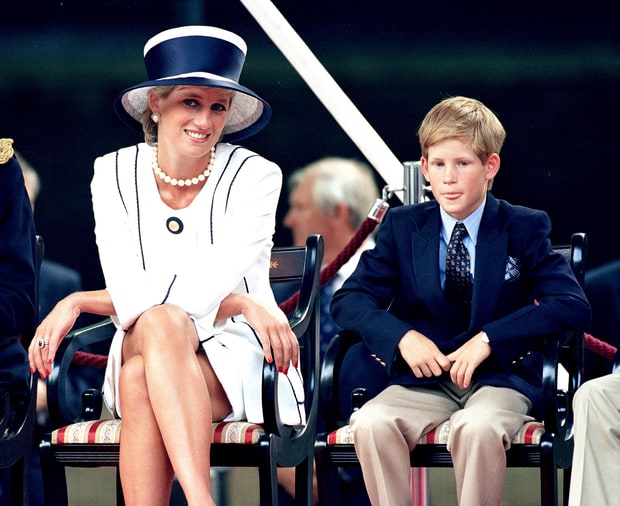



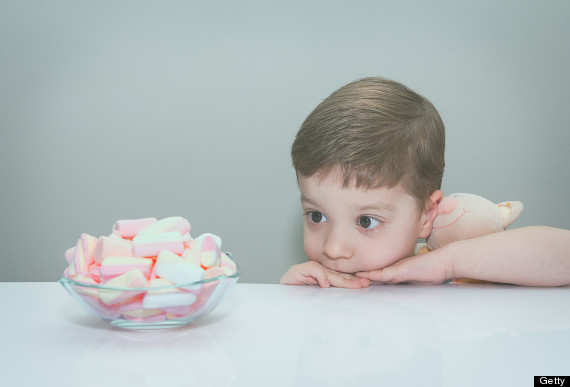












Death and taxes, as the saying goes, are the only certainties in life. So why then is one of these things still so hard to talk about? Not taxes, that’s just zzzzz, but death. Always death.
As inevitable as dying may be, talking about mortality remains taboo. How strange this is when it affects us all – not just our own deaths of course, but those of our loved ones, as shown by Prince Harry’s recent admission that he regrets not talking sooner about how his mother’s death affected him.
Harry was 12 when Diana, Princess of Wales, died. At 31, he was hosting an event at Kensington Palace for the mental health charity Heads Together when he admitted that he only began opening up about her sudden death three years ago. That’s a lot of years of sweeping a defining life event under the carpet.
I was 10 when my mother, Jane, died in 1985. And it has taken me all this time to open up about it. Last year, I wrote a piece for the Guardian’s A Moment that Changed Me series about her death. I had recently started a new relationship, and my boyfriend asked me what had happened. I realised I had never really talked about it before, and that I needed to.
The piece struck a chord. In the first few days alone it had more than 225,000 views online. I had comments from readers all over the world – and not just in the comments thread beneath the piece, but from strangers who tracked me down via social media.
Even now, a year later, people I know vaguely come up to me and say they have read the piece, and that they were moved, or that they too have been bereaved. Maybe it was their father, their sister or their friend – but they have been bereft, broken and lost, and they too have rebuilt themselves, and their lives. The message is clear – this is a universal feeling.
And even if you have never been bereaved, have rarely contemplated your own mortality or that of your nearest and dearest, talking about death can be liberating. An old school friend got in touch after I wrote the article. To think that I was going through all of that at school, she said. She didn’t have an inkling. How could she? My new life had begun and I was not to look back on my old one. This was the message that resonated throughout the rest of my childhood.
After my mother’s death, I was looked after by a friend of hers, who had three older children – two were young adults, aged 20 and 18. They didn’t understand how a 10-year-old could be grieving. On the first Mother’s Day that rolled around – less than four months after she died – they pressured me into giving my new foster mother a card. “She’s done a lot for you,” they said. How could I possibly say this woman wasn’t my mother? That I had but one mother, and that she was dead. I was a shy child. I kept my mouth shut and handed over a card. They did not mean to be cruel. They were protective of their own mother. And I am sure they genuinely did not know how I was feeling, or think to talk to me about it.
I understand. Talking to a child who has lost a parent is particularly difficult, and heartbreaking. But bereaved children are not rare. The charity Child Bereavement UK estimates that 23,600 parents of children under 18 die every year, and that one in 29 children has lost a parent or a sibling – that’s one child in every class.
There’s a mistaken idea that children forget, and that they adapt. Yes children can be resilient and adaptable – as can adults. But children grieve. We need to acknowledge this, and learn how to talk about death.
It has taken me 30 years to realise that my story isn’t over – and that talking about my mother’s death doesn’t mean I am stuck in the past, but that I am moving forward. I have started writing about her more, and about the multifaceted aspects of bereavement. And because of this opening up, not only have strangers been in touch, but also people who knew my mother. I have even met some of them – a moving, strange and surreal experience. So I will continue to talk about death, to open up, to throw off my Britishness, because it feels right. And you should too.